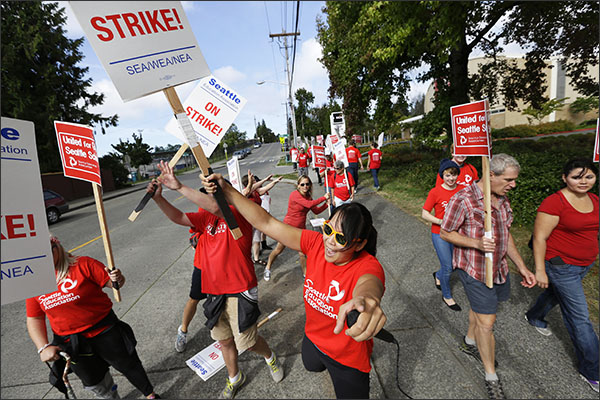Last month the state Department of Labor & Industries (L&I) announced the average rate increase for workers’ compensation taxes in 2017 would be “a small increase” of 0.7%. L&I laughingly claims this “small increase” is the result of their efficiency: “By helping injured workers heal and get back to work sooner, we've been able to keep rates steady and predictable." The fact is it takes the average injured worker in Washington over twice as long to return to work as the national average. That is a story for another blog.
According to L&I, the “indicated rate change” necessary to keep the workers’ comp system at a sustainable, break-even rate in 2017 is actually -2.4%. So L&I could decrease rates by 2.4% next year with no harm to the system. The 0.7% rate increase means employers and workers are really paying 3.1% more than is needed. Even keeping the rate change at zero would bring more money than needed to keep the system at break-even.
This is nothing new. Last year L&I increased rates by 0.9% more than was necessary, and in 2015 they charged 4.2% more than needed.
So why is L&I increasing workers’ comp rates when a rate reduction will keep the state-run system at break-even? The agency is trying reverse the damage it caused by years of using contingency reserve money as a buffer to politically “buy down” the rate, in some years by more than 24%.
The average rate increases adopted by L&I between 2000-2015 total a whopping 70%, a significant burden for employers, but far less than the actual costs of running the state monopoly system each year. The indicated, or break-even, rate increase that reflects the true cost of running the monopoly workers’ comp system during that same 15-year period is a staggering 188%.
Employers were spared this triple-digit increase because for years L&I dipped into the once-flush reserve fund, which exists to ensure the system has enough to cover future liabilities, to artificially avoid the actual rate hikes needed to keep the state monopoly system afloat. Rather than hit employers with outrageous and politically unpopular rate hikes every year, the agency suppressed the increases in favor of lower, less controversial rates (although some of those reduced rate hikes were still in the double-digits). The state-run system was failing and L&I masked the crisis by using contingency reserve funds to reduce the rate increases needed to cover the real costs of the system.
After years of this shell game, the contingency reserve fund was drawn so low the state auditor warned the fund was in danger of insolvency.
Now the agency is trying to shore up its contingency reserve fund. So after years of gaming the system to allow employers to pay less than was really needed to keep their bloated and inefficient state-run monopoly in the black, L&I has adopted a strategy of setting rates higher than needed to replenish the fund they drew down.
Meanwhile, neighboring Oregon and Idaho just announced decreases in their average wokers’ comp rates for 2017. Oregon will decrease workers’ compensation rates for the fourth year in a row, by an average 6.6%, and Idaho by 1.2%.





